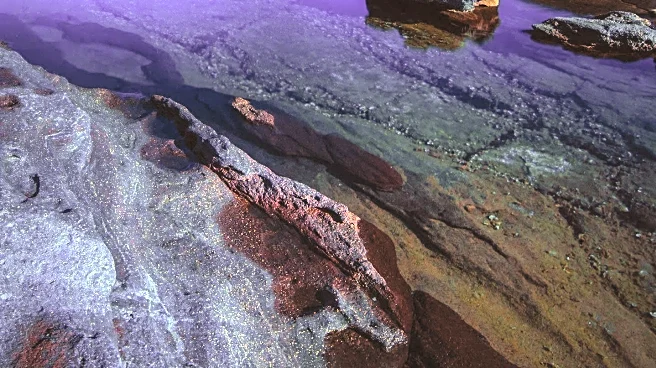What's Happening?
The Orionid meteor shower, one of the year's most anticipated celestial events, is reaching its peak on Tuesday and Wednesday nights. The American Meteor Society notes that the shower runs annually from
October 2 to November 7, with the best viewing times after midnight until dawn. This year, the new moon provides optimal dark sky conditions, enhancing visibility of the meteors. The Orionids, known for their bright and fast-moving meteors, are expected to deliver spectacular fireball meteors, which are brighter than any planet in the night sky. The shower is caused by debris from Halley's Comet, which orbits the sun every 74 to 80 years. The event coincides with the appearance of two rare comets, adding to the spectacle.
Why It's Important?
The Orionid meteor shower offers a unique opportunity for astronomers and sky enthusiasts to observe one of the most beautiful meteor showers of the year. The event is significant for scientific research, as it provides insights into the composition and behavior of comet debris. For the public, it serves as an educational moment to learn about celestial phenomena and the history of Halley's Comet. The shower's visibility across much of the United States, with favorable weather conditions, allows widespread participation in this natural spectacle, fostering interest in astronomy and science.
What's Next?
As the Orionid meteor shower continues, viewers can expect good visibility throughout the week, with the moon remaining at less than 25 percent illumination until Sunday. Observers are encouraged to find dark sky locations away from city lights to maximize viewing potential. The event also sets the stage for future meteor showers, such as the Eta Aquarids in May, which are also caused by Halley's Comet debris. Continued observation and documentation of these events contribute to ongoing research in astronomy.
Beyond the Headlines
The Orionid meteor shower highlights the cultural and historical significance of celestial events, often inspiring art, literature, and folklore. It also underscores the importance of preserving dark sky areas to ensure future generations can enjoy such natural wonders. The event may prompt discussions on light pollution and its impact on astronomical observations.













